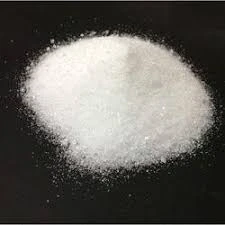HPMC for Detergent A Versatile Solution for Modern Cleaning Products
In the ever-evolving world of cleaning products, Hydroxypropyl Methylcellulose (HPMC) has emerged as a significant ingredient due to its unique properties and versatility. HPMC is a non-ionic cellulose ether derived from natural cellulose, making it an environmentally friendly choice. Its broad range of applications, particularly in detergents, has positioned it as a favorite among manufacturers looking to enhance product performance while maintaining eco-friendliness.
What is HPMC?
HPMC is synthesized through a series of chemical processes that modify cellulose, a major component of plant cell walls. This modification results in a white, odorless powder that is soluble in water and can form transparent gels. The variation in the degree of substitution and molecular weight allows HPMC to possess specific rheological properties, making it adaptable for various applications. In the context of detergents, HPMC plays several critical roles.
Role of HPMC in Detergents
1. Thickening Agent One of the primary functions of HPMC in detergents is its ability to act as a thickening agent. By adjusting the viscosity of the detergent formulation, HPMC improves the product's texture, making it easier to apply and use. This thickening property ensures that the detergent clings better to surfaces, enhancing its cleaning efficacy.
2. Stabilizer HPMC helps stabilize emulsions, ensuring that the ingredients in a detergent remain uniformly mixed. This stability is crucial for maintaining product performance over time, preventing the separation of solids or liquids that can diminish efficacy. By acting as a stabilizer, HPMC prolongs the shelf life of detergents, ensuring they perform as intended.
hpmc for detergent

3. Film-Forming Agent Another notable characteristic of HPMC is its ability to form a film. This property is particularly beneficial in applications where a long-lasting protective layer is desired. In cleaning products, the film can provide a barrier that prevents dirt and grime from adhering to surfaces, making ongoing cleaning easier and more efficient.
4. Lubrication In powder detergents, HPMC can also act as a lubricant. It reduces friction between particles, enhancing the flowability of the detergent and facilitating even distribution during application. This is especially important in automatic dispensing systems, where consistent delivery is crucial for optimal cleaning results.
5. Sustainability As consumers become more environmentally conscious, the demand for eco-friendly products continues to rise. HPMC is derived from renewable cellulose sources and is biodegradable, making it an attractive alternative to synthetic additives. By incorporating HPMC into detergent formulations, manufacturers can appeal to this growing market of conscious consumers seeking sustainable cleaning products.
Applications in Various Types of Detergents
HPMC is not limited to just one type of detergent; it finds applications across various categories, including liquid detergents, powder detergents, and even specialty products such as fabric softeners. In liquid formulations, its thickening and stabilizing properties enhance product performance and user experience. In powder detergents, it improves solubility and dispersibility, ensuring effective cleaning in both hard and soft water conditions.
Conclusion
The incorporation of Hydroxypropyl Methylcellulose in detergent formulations presents numerous advantages, from enhancing product texture and stability to promoting sustainability. As the cleaning product industry continues to innovate, the demand for versatile, eco-friendly ingredients like HPMC will likely increase. By leveraging the unique properties of HPMC, manufacturers can create effective and environmentally responsible cleaning solutions that meet the needs of today's consumers. In a world where cleanliness and sustainability go hand in hand, HPMC stands out as a key ingredient driving the future of detergent technology.
-
Rdp Powder: Key Considerations for Wholesalers in the Building Materials IndustryNewsJul.08,2025
-
Key Considerations for Wholesalers: Navigating the World of Hpmc - Based ProductsNewsJul.08,2025
-
Hpmc Detergent: Key Considerations for WholesalersNewsJul.08,2025
-
Key Considerations for Wholesalers: China Hpmc For Tile Adhesive, Coating Additives, Concrete Additives, and MoreNewsJul.08,2025
-
Crucial Considerations for Wholesalers: Navigating the World of Construction MaterialsNewsJul.08,2025
-
Key Considerations for Wholesalers Sourcing Additive For Cement, Additive For Concrete, Additive For Putty from Additive Manufacturer Shijiazhuang Gaocheng District Yongfeng Cellulose Co., Ltd.NewsJul.08,2025




